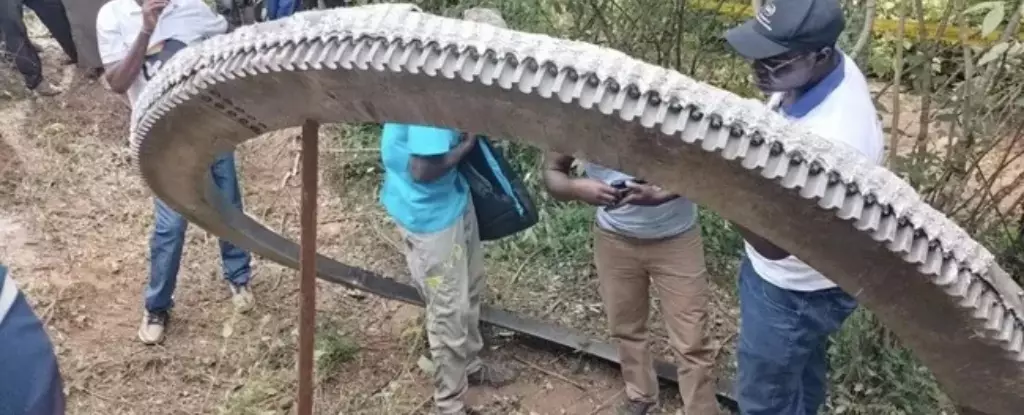On a seemingly ordinary Wednesday afternoon, Mukuku Village in Kenya found itself thrust into the spotlight following an astonishing event. At around 3 p.m. local time, villagers were startled by the sudden appearance of a large metallic object. Weighing approximately 1,100 pounds and spanning 8 feet in diameter, this unusual newcomer was identified as space debris by the Kenya Space Agency (KSA). According to a statement released by the agency, there were no reported injuries, and the debris was deemed to pose no immediate risk to the community. The incident raises essential questions about the origin of such debris and the measures in place for managing space junk falling to Earth.
The Investigation Begins
Maj. Alois Were from the Kenya Space Agency indicated that the metallic ring appeared to originate from a “rocket separation stage.” However, the precise identity of the rocket that shed this piece of equipment remains unknown. In an effort to unravel the origins of the debris, KSA officials initiated a thorough investigation and collected fragments from the impact site for further analysis. Understanding the source of this metallic object is crucial not only for accountability reasons but also for broader discussions about international space law, which governs the responsibilities associated with space debris.
Upon determining the owner of the space debris, the KSA intends to activate “existing legal mechanisms under international law” to ensure that the responsible agency or individual is held accountable for the unexpected incident. This situation underscores the increasing burden faced by space agencies globally as they grapple with the implications of falling debris.
The Mukuku incident serves as a stark reminder of the increasing challenges of space debris management. Historically, space debris was expected to either disintegrate upon reentry into Earth’s atmosphere or fall in sparsely populated areas. However, this is not always the case, as evidenced by past events. For instance, in May 2024, a piece of debris from SpaceX, about the size of a car hood, crash-landed in North Carolina, raising alarms about the safety implications for outdoor enthusiasts. Thankfully, no incidents involving fatalities have occurred due to space debris thus far, but the close calls emphasize the urgency of improving debris management strategies.
Incidents such as a two-pound piece of debris from the International Space Station crashing through a Florida family’s roof have further fueled public concern. The family’s decision to sue NASA not only highlights an individual grievance but also reflects a growing awareness among the public regarding the risks associated with space exploration and debris.
As space exploration advances, the rate of rocket launches is also escalating. Between the years 2008 to 2017, there was an average of 82 orbital launches annually. This figure saw a significant rise to about 130 launches each year from 2018 to 2022, culminating in a record-breaking 250 launches in 2024 alone. As more objects are introduced into space, the likelihood of collisions increases, compounding the issues of space debris and its repercussions for life on Earth.
According to physicist Thomas Berger, the daily issuance of approximately 1,000 warnings regarding potential collisions among satellites speaks volumes about the current state of space safety. With millions of fragments, both large and small, circulating around Earth at incredible speeds, there exists an imminent risk of devastating chain reactions among these objects.
The Unforeseen Future of Our Cosmic Environment
As we delve deeper into the age of space exploration, the threats posed by space debris are becoming increasingly complex. An unchecked escalation in collisions could pave the way for a catastrophic scenario—one where space becomes virtually unusable due to the overwhelming density of debris. This would not only hinder scientific exploration but could also jeopardize critical communication satellites and safety systems that rely on space infrastructure.
Conclusively, the unexpected landing of the metallic ring in Mukuku Village is more than just a captivating story; it serves as a catalyst for vital discussions surrounding our responsibilities in space, the management of debris, and the future of space exploration. As this narrative unfolds, it becomes clear that the stakes are higher than ever in our expanding universe.


Leave a Reply